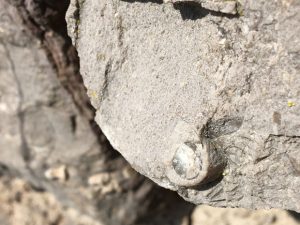School Buildings and Yard Inspire Study of Rock Types
With rocks and fossils now part of the Year 3 science curriculum in England, teachers may be thinking of purchasing expensive mineral sets to help demonstrate different rock types. These of course have their place, but our dinosaur experts suggest that a quick tour of the school should be conducted as you probably have a whole range of different rocks and structures on display and available as examples. Gravel from a path can help demonstrate how rocks erode and explain the action of water on the polishing of rocks as well as transportation and re-deposition.
Rock Types
In addition, a simple brick wall can be used to demonstrate how sedimentary rocks form layers that build up with the oldest rocks deposited first (not withstanding any geological movements and so forth).
You might be lucky to have fantastic walls such as this one, spotted by one of our teachers whilst delivering a workshop about fossils to a primary school in Cumbria. An ideal example that can be used when studying rocks and fossils with Year 3.
A Wall Makes A Wonderful Example When Discussing Rocks

A crinoid stem exposed in a stone wall at Mynydd Marian nature reserve. Walls can help to explain deposition.
Picture credit: Everything Dinosaur
Explaining About Sedimentary Rocks
This stone wall made of slate was just what was needed to help explain how metamorphic rocks can form from sedimentary ones. Helping Year 3 study fossils and rocks.
To visit Everything Dinosaur’s award-winning website: Visit Everything Dinosaur.

